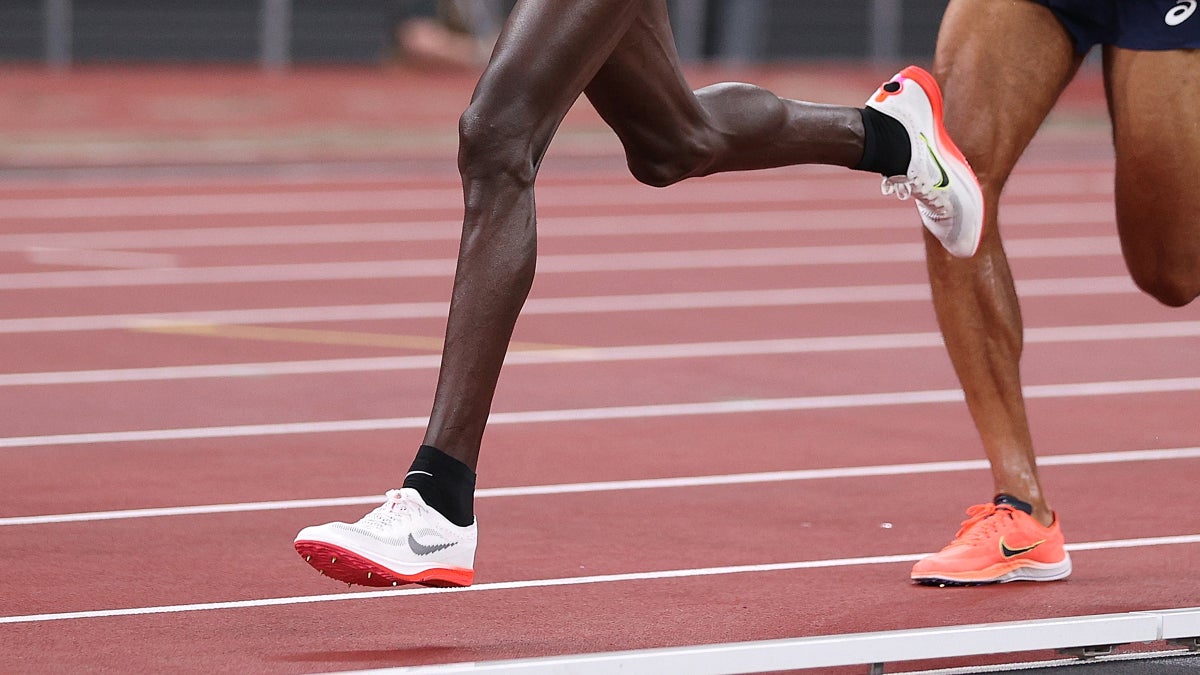No products in the cart.
Outdoor Adventure
The Best Track Spikes of 2022, Reviewed
Whether you’re getting ready for a race or a hard workout, the process of spiking up stirs a familiar excitement and anxiety for what’s to come: your body instinctively knows it’s time to perform.
If you want to compete at your best in track and field, spikes are essential—and today’s are better than ever. Designers have created a new breed of super spikes that are more comfortable and may enhance performance and reduce recovery times. Here’s what you need to know about the latest technology, along with our top picks from this spring’s track-spike options.
What Is a Super Spike?
When designing a spike, Elliott Heath, footwear product manager for Nike Running, says that he and his team are always seeking the perfect balance between four main inputs: weight, cushioning, stiffness, and containment, or how well the shoe holds the foot. Until recently, designers focused on making spikes increasingly minimal while retaining their ability to grip the track and secure the foot. The resulting thinly padded soles “beat up your body at the cost of performance,” Heath says. Stiff forefoot plates, incorporated into outsoles, served to generate more power by extending runners’ push-off.
In the past four years, however, big changes have happened around cushioning, Heath says. New foams have allowed designers to put more cushioning into track spikes without adding excessive weight. These new foams are not only lighter, they also rebound more effectively than ever before. So although they sink in underfoot, you can still push off powerfully.
Taking cues from road-running super shoes like the Nike Vaporfly 4%, brands have created spike models with highly cushioned midsoles, combining new lightweight, energy-returning foams with embedded, curved plates that act in a novel way to stabilize and optimize the foam’s response. Enter the super spike.
Are Super Spikes Worth the Price?
High school, collegiate, national, and world records have all fallen since the advent of the new spikes, suggesting that they enhance performance, like their road-shoe counterparts. That said, scientific evidence on the spikes’ effect isn’t entirely clear. In a recent paper, researchers from the University of Massachusetts concluded that due to the more complex metabolic demands of track events, designing valid studies to quantify the benefits of spikes is more difficult than measuring the effect of marathon super shoes. Lacking such studies, it’s possible that recent fast times might also be due to other factors, like better training during the pandemic.
Even if we can’t say scientifically that super spikes will make you faster, they feel like they do. Scott Burns, head track and field coach at Downingtown West High School in Pennsylvania and an elite masters runner, believes that the investment is worthwhile for any experienced runner looking to optimize performance. Other testers unanimously agreed with Burns; all found a marked improvement in perceived performance benefits when wearing the more expensive spikes.
Yet possible benefits have to be balanced with the price tag and a runner’s ability. Super-spike technologies magnify imbalances as well as strengths, and they have the potential to negatively alter stride mechanics for those lacking stability, power, and foot strength. Novice or emerging runners, Burns says, may not find the expensive new spikes appropriate. Newer runners may want to race in lightweight training or road-racing shoes or opt for less expensive spike models made to be more accessible and forgiving (see our reviews of best-value spikes at the end of this piece).
How to Choose a Track Spike
Given the large differences in how each spike feels and performs—even in various models from the same brand—you have to try a spike on and run in it to evaluate whether it works for you.
First, determine which type of spike you need for your preferred events. Track spikes are divided into three categories: sprint (optimized for 60 to 400 meters), middle distance (400 to 3,000 meters), and long distance (3,000 to 10,000 meters). These distinctions are not absolute, and some runners may find a spike works well for them outside their intended event category.
Paul Lang, senior manager of footwear merchandising at ASICS explains that the distinction is based primarily on how they move with the foot. Sprint spikes, Lang says, “are built with a stiff spike plate, usually running the length of the shoe, to provide rigidity underfoot and promote power transfer and propulsion.” These stiff plates feature an aggressive forward-leaning geometry that helps sprinters stay on their toes. Sprinting spikes will also have a more structured upper than distance models. Lang explains that this locks down the foot to harness the incredible amount of power created by the sprinter’s explosive moments.
“A middle-distance spike,” Lang says, “maintains an aggressive geometry that helps the runner get to their midfoot for an efficient, powerful gait, but typically the plate will only run one-half to three-quarters of the length of the shoe, to allow slightly more flex and comfort over the multi-lap races.” The uppers tend to be light and flexible, prioritizing comfort and efficiency over power. Long-distance spikes tend to offer even more flexibility than middle-distance spikes and typically have more cushioning through the midsole for increased comfort during long track races.
After sorting out what type of spike you need, the choice comes down to fit and personal preferences on cushioning, stiffness, and geometry. Of these, sole rigidity seems to vary the most between spikes. Knowing whether you prefer a stiff sole or a more flexible one will go a long way in helping you find the ideal track spike. Typically, more experienced runners who stay up on their toes and push off powerfully will favor a stiffer and more curved spike.
“If you’ve never worn spikes before, find something that fits the foot comfortably and allows the feeling of natural movement,” Lang says. “If you’re not yet decided on an event group, a middle-distance spike is the most versatile and can be used across sprints, hurdles, jumps, and distance.”
How We Tested Spikes
To test this spring’s spike collection, we recruited a group of eight experienced male and female track runners, including sprint, middle-distance, and long-distance specialists. Over two months, they tested the leading models from each major running brand in both track workouts and races ranging from 60 to 10,000 meters. Each runner then ranked each spike on a scale of one to ten and submitted a final report based on performance, fit, ride quality, and overall impression. We compiled the reports to tease out the best models in each category and gathered additional feedback on these models from other athletes to broaden the following reviews.
The Best Distance Spikes
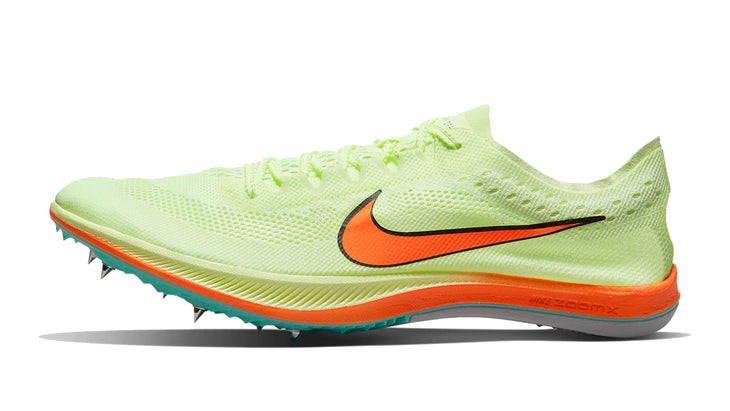
Nike ZoomX Dragonfly ($150)
The best all-around high-end spike for distance runners, the Nike ZoomX Dragonfly is suitable for all track events 800 meters and longer. The Dragonfly’s stiff sole and moderately aggressive forefoot rocker promote smooth and efficient transitions, making the spike the unanimous favorite among our middle- and long-distance testers. A thick layer of Nike’s highest-energy-returning foam, ZoomX, embedded with a full-length, curved Pebax plate, delivers cushioning and rebound. “No other spike provides a ride that feels as smooth and effortless rounding corners and sprinting straightaways as the Dragonfly,” one tester noted. “It’s worth every penny.”
Ideal Events: 800 to 10,000 meters
Weight: 4.4 ounces
Spike Pins: 6
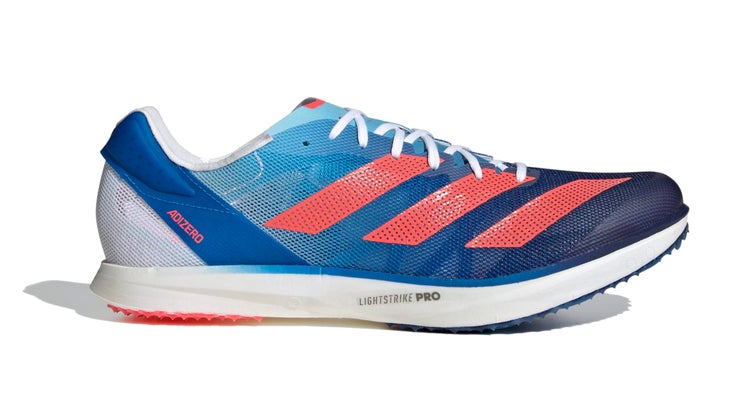
Adidas Adizero Avanti TYO ($150)
As one of the most cushioned and flexible spikes on the market, the Adidas Adizero Avanti TYO was our top pick for the longest track events. The soft, bouncy, TPU-based LightstrikePro midsole, moderated with embedded carbon-infused rods, delivers a ride that closely resembles the feeling of a low-to-the-ground, cushioned road-racing flat, yet still offers a high degree of sensitivity to the track surface. Runners who push off their toes powerfully may find the Avanti TYO overly soft and flexible in the forefoot. The shoe runs a little long, so if you’re in between sizes, or you don’t wear socks, it’s worth considering a half size down from your usual running-shoe size. These would also double as a great cross-country spike.
Ideal Events: 5,000 to 10,000 meters
Weight: 5.6 ounces
Spike Pins: 6
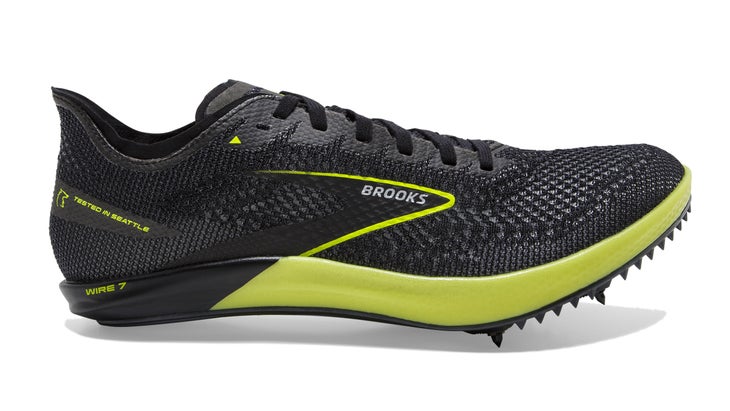
Brooks Wire 7 ($130)
The Wire 7 provides a super-spike feel that works well for any distance event—but at a slightly cheaper price point. Those who find the Dragonfly too stiff and aggressive will enjoy the softer flex and more moderate curve of the Wire 7’s full-length Pebax plate, which is embedded in a healthy slab of Brooks’s cushy and responsive DNA Flash midsole, a nitrogen-infused EVA blend. One tester felt that the foam and plate combination bolstered energy return, “giving it a nice, subtle pop.” A word of caution on the fit: testers all found the tightly woven upper to be extremely snug, if not constrictive, in both length and width, so consider going up a full size, especially if you plan to wear socks.
Ideal Events: 800 to 10,000 meters
Weight: 5.5 ounces
Spike Pins: 4
The Best Middle-Distance Spikes

Nike Air Zoom Victory ($180)
If you’re a strong forefoot runner, there’s no better spike than the Nike Air Zoom Victory to propel you to your next PR. Nike packed this shoe with high-end tech, including a full-length carbon-fiber plate embedded in ZoomX foam and a large, forefoot Zoom Air unit that combines pressurized air and tightly stretched fibers to create an explosive ground response. “Every stride feels powerful and full of spring, lifting your confidence and vaulting you forward,” reported one tester. Best for the advanced runner, the aggressively tuned spike is a sharp, precise tool, requiring a strong, forward-focused stride. Those who can handle the stiff rocker profile will be rewarded with a “springy, lightning-fast tour of lane one.”
Ideal Events: 400 to 3,000 meters (and maybe 5,000 meters for some)
Weight: 4.6 ounces
Spike Pins: 6
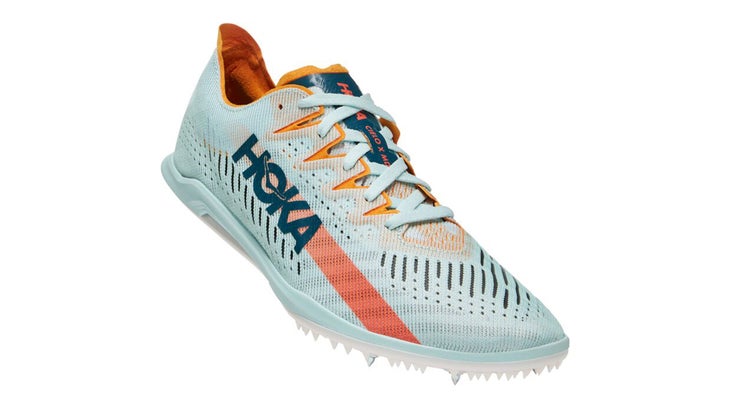
Hoka Cielo X MD ($160)
Outfitted with a full-length carbon-fiber plate embedded in the midsole, the Hoka Cielo X MD isn’t as aggressively forward leaning and stiff as the Nike Air Zoom Victory, making it much more forgiving and suitable for all levels of runners. Despite a good amount of light, responsive, compression-molded EVA foam cushioning underfoot, you get a surprisingly sensitive and connected ride: “a nice mix of smooth and fast, yet firm and snappy,” said one tester. The engineered mesh fabric wrapping the foot embodies everything we like to see in a track-spike upper—lightweight, airy, and comfortable enough to go sockless.
Ideal Events: 400 to 5,000 meters
Weight: 4.5 ounces
Spike Pins: 6
The Best Sprint Spikes
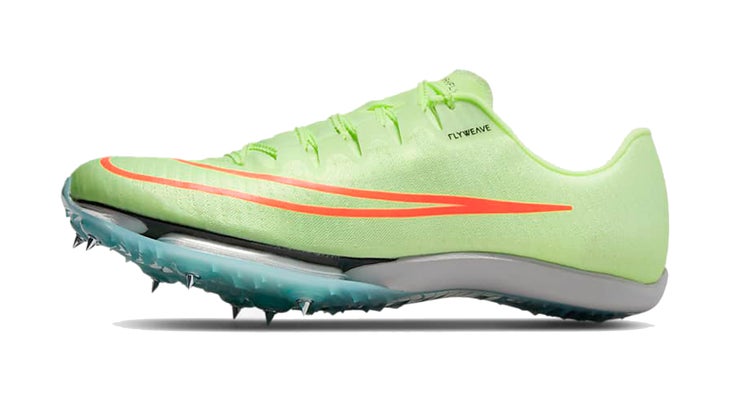
Nike Max Fly ($180)
Coming in as the preferred spike for all sprint events, the Nike Max Fly is every bit a super spike. A two-chambered Zoom Air unit in the forefoot sits beneath a full-length carbon-fiber plate, creating a ride that “feels more like you’re running on bouncy pillows rather than a thin, stiff spike plate,” according to one tester. The responsive foam and pressurized air units in each midsole result in a soft, cushioned ride that “makes sprinting feel less harsh, allowing you to attack the ground more.” The downside of all that cushioning? A wobbly feeling out of the starting blocks. But once you get used to how they respond, one tester says, “no spike is more comfortable.”
Ideal Events: 60 to 400 meters, hurdles
Weight: 5.7 ounces
Spike Pins: 7
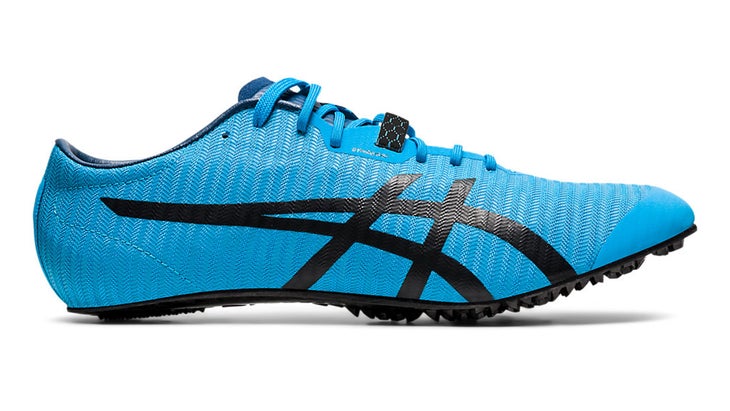
ASICS Metasprint ($180)
The Metasprint quickly emerged as a short-sprint favorite, given a unique design that eliminates screw-in spikes. Instead, a curved, carbon-fiber outsole plate with clusters of protruding honeycomb shapes provides both rigidity and traction. One tester reported that this stiff plate pushed him up onto the front of his foot more than the plate of any other spike, yielding the highest stride frequency of the test. The ride is light and quick off of the ground, and, despite its minimal cushioning, one tester felt the spike performed “equally as well or sometimes better than the Nike Max Fly.” The Metasprint is suitable for intermediate or advanced runners, especially in short, straight sprints and for hurdles. In longer events, however, the spike’s foothold and traction through turns were deemed questionable.
Ideal Events: 60 to 100 meters, short hurdles
Weight: 4.9 ounces
Spike Pins: None
The Best-Value Spikes
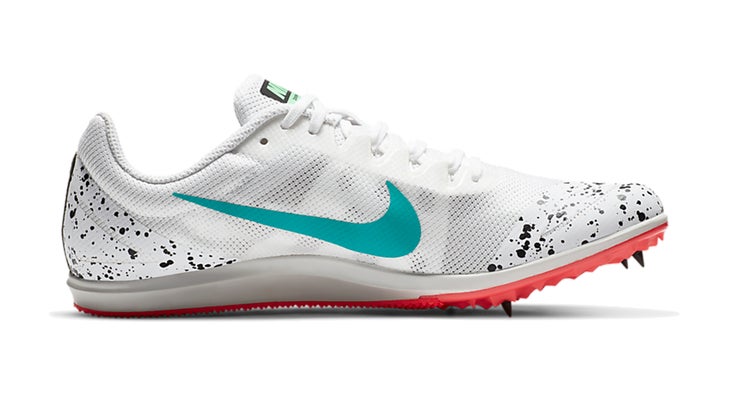
Nike Zoom Rival D 10 ($65)
Not everyone needs, or will even benefit from, pricey super spikes. For runners who want a versatile, reliable, well-made distance spike, the Nike Zoom Rival D 10 is one of the best-value picks on the market. It’s built with a Pebax spike plate that adds a touch of rigidity to maintain performance form, while still allowing a natural flex that favors novice runners. A full-length, energetic EVA midsole provides just enough cushioning underfoot to assure a comfortable ride. A first-time high school runner focusing on anything over 400 meters can’t go wrong with this time-tested favorite.
Ideal Events: 400 to 5,000 meters
Weight: 5.8 ounces
Spike Pins: 5
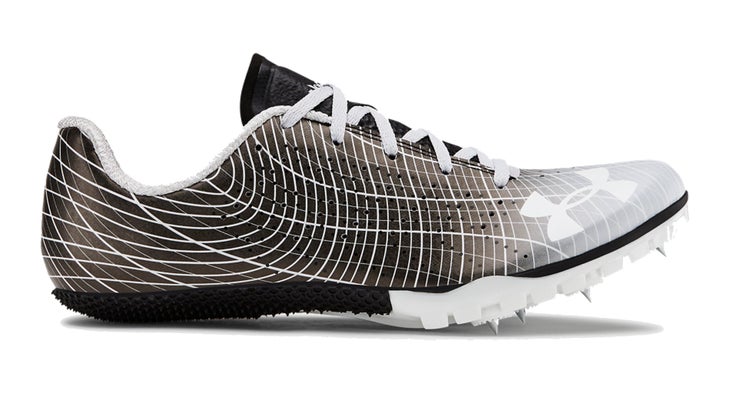
Under Armour Kick Sprint 3 ($65)
At less than half the price of high-end sprinting spikes, the Under Armour Kick Sprint 3 is an absolute bargain for novice and emerging sprinters. The three-quarter-length Pebax cleat plate delivers powerful propulsion without feeling too stiff and harsh like many entry-level spikes can. “In general, these spikes feel well padded, moderately stiff, and fairly durable, making them a good choice for high school athletes in any sprint or hurdling event,” said one tester. However, they fit extremely small—so much so that our tester felt a full size up would be more appropriate for most.
Ideal Events: 60 to 400 meters, hurdles
Weight: 6.5 ounces
Spike Pins: 6
Source link

